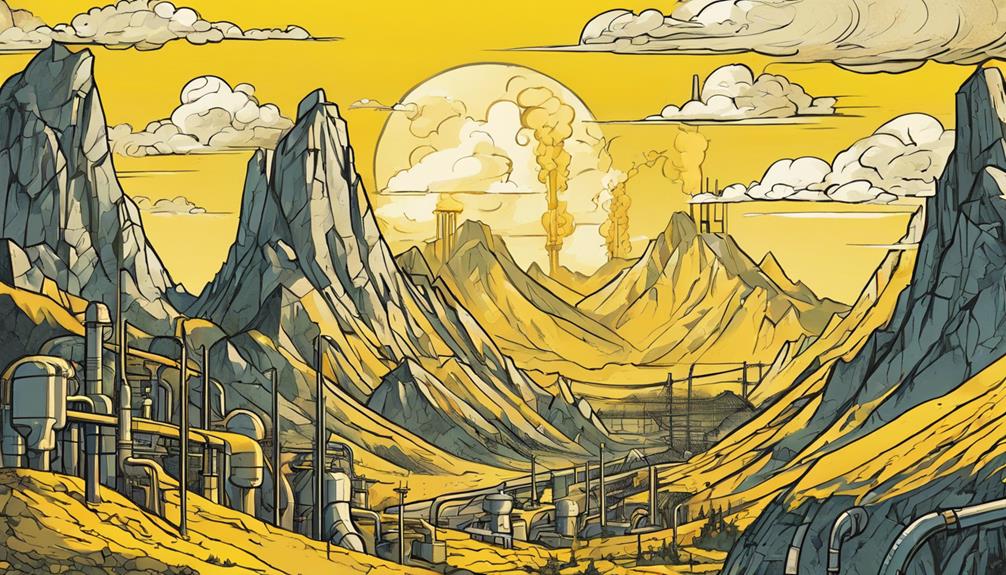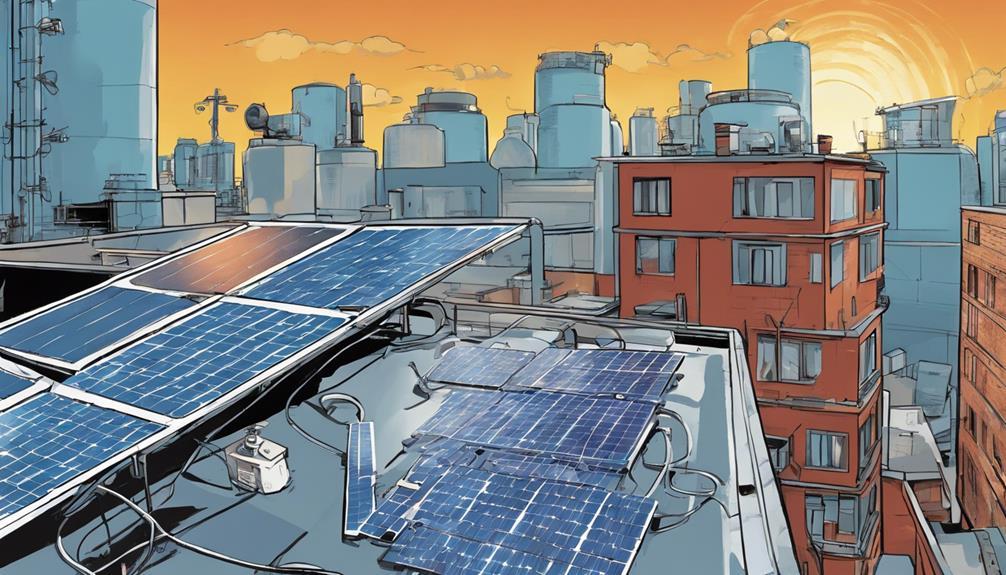We're on the cusp of a renewable energy revolution, and geothermal energy is poised to play a significant role. To tap into its full potential, we need to address the barriers holding it back. First, we must overcome high initial costs by exploring innovative financing strategies and offering incentives. Next, we need to upgrade our infrastructure and streamline regulatory processes. Advancements in technology will also be essential, as will ensuring sustainable practices and raising public awareness about geothermal energy's benefits. By addressing these challenges, we can release geothermal energy's full potential and take a significant step towards a cleaner, more sustainable future – and that's just the beginning.
Key Takeaways
- Overcome financial barriers by exploring innovative financing strategies, incentivizing investment, and offering tax credits, grants, and low-interest loans.
- Address infrastructure and regulatory hurdles by upgrading transmission grids, streamlining permitting processes, and reforming complex regulations.
- Advance geothermal technology through research and development, efficient drilling technologies, and improved reservoir management.
- Ensure environmental sustainability by monitoring and mitigating impacts, planning land use, and implementing effective waste management strategies.
- Raise public awareness through targeted education initiatives, highlighting geothermal energy's benefits, reliability, and low greenhouse gas emissions.
Breaking Down Financial Barriers

We can overcome the high upfront costs associated with geothermal energy adoption by exploring innovative financing strategies and incentivizing investment in this clean and renewable energy source. One approach is to develop public-private partnerships that share the financial burden of exploration and drilling. Governments can offer tax credits, grants, and low-interest loans to attract investors.
Additionally, we can create financing mechanisms that allow multiple stakeholders to invest in geothermal projects, spreading the risk and rewarding those who take on the challenge. By thinking creatively about financing, we can break down the financial barriers that have held geothermal energy back and open up its full potential. It's time to get creative and make geothermal energy more accessible.
Infrastructure and Regulatory Hurdles
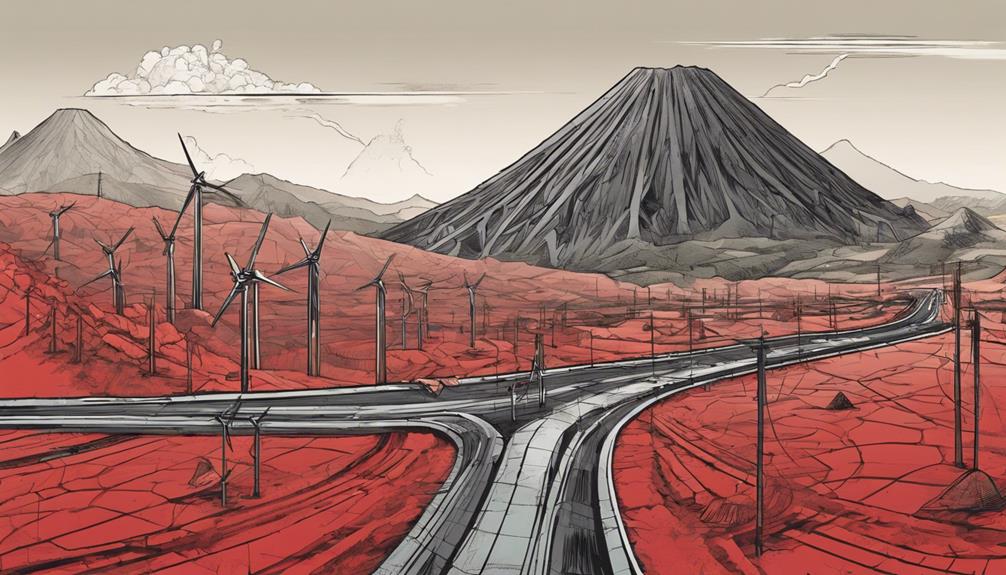
Inadequate infrastructure and outdated regulations are significant obstacles to geothermal energy expansion, necessitating a dedicated effort to upgrade transmission grids and streamline permitting processes. As we work towards unleashing the full potential of geothermal energy, we must address these infrastructure and regulatory hurdles head-on.
Here are key areas that require attention:
- Grid expansion: Geothermal power plants require modern transmission infrastructure to transport electricity to the grid.
- Permitting reform: Complex and time-consuming permitting processes must be simplified to encourage investment.
- Regulatory harmonization: Inconsistent regulations across regions hinder geothermal development; standardized policies are needed.
- Infrastructure investment: Governments and private sector actors must invest in building out the necessary infrastructure to support geothermal growth.
Advancing Geothermal Technology
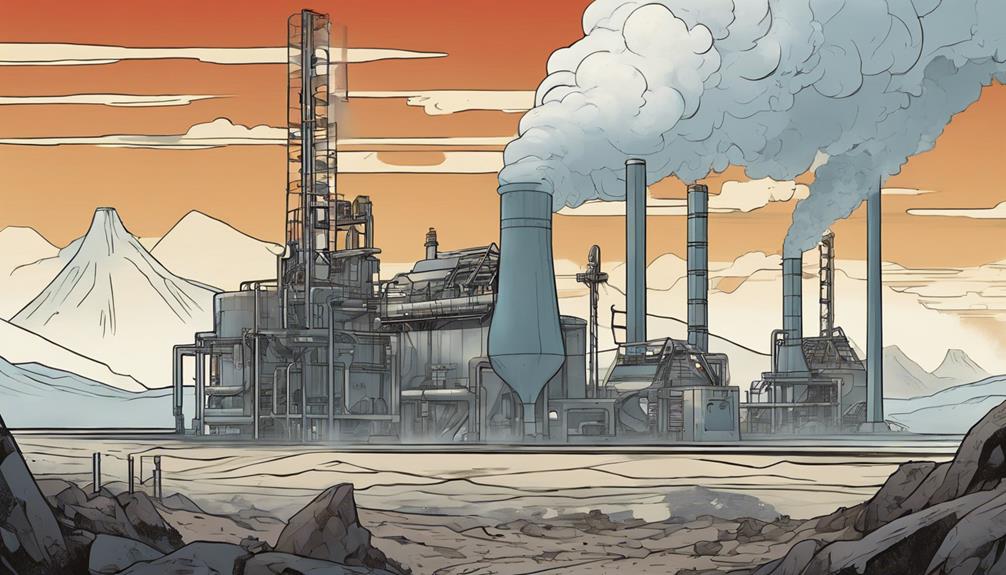
Developing more efficient and cost-effective technologies is essential to harnessing geothermal energy's full potential. Current limitations in deep drilling and reservoir management hinder widespread adoption. We need to invest in research and development to overcome these technological barriers.
Advancements in drilling technologies can reduce exploration costs and increase the accessibility of geothermal resources. Improved reservoir management systems can also enhance the efficiency of geothermal power plants. In addition, we must address the lack of standardization in geothermal system design and maintenance, which hinders the industry's growth.
Environmental Impact and Sustainability
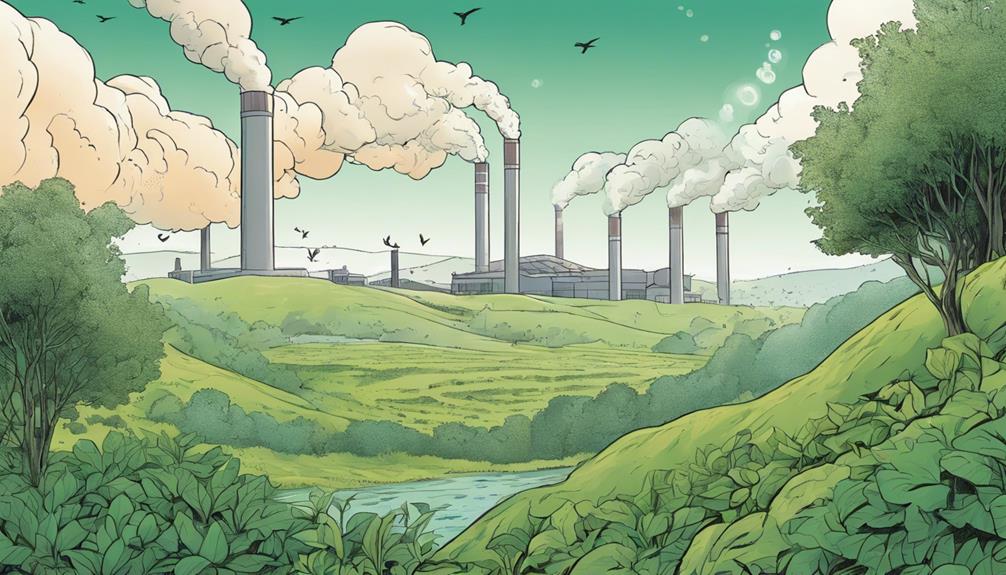
How can geothermal energy, a clean and renewable power source, minimize its environmental footprint and guarantee long-term sustainability?
As we explore the environmental impact of geothermal energy, it's clear that proper management is key.
Here are some essential considerations:
- Reservoir management: Ensuring sustainable fluid extraction and reinjection rates to prevent depletion and maintain reservoir pressure.
- Environmental monitoring: Continuously tracking and mitigating potential impacts on local ecosystems and water resources.
- Land use planning: Carefully selecting project locations to avoid sensitive habitats and minimize land disturbance.
- Waste management: Implementing effective strategies for handling waste fluids and materials generated during operation.
Raising Public Awareness

We must educate the public about geothermal energy's benefits, dispelling misconceptions and highlighting its potential to provide clean, reliable power while minimizing environmental impacts.
Lack of awareness and misconceptions are significant barriers to adoption. We need to bridge the knowledge gap through targeted public education initiatives.
By promoting geothermal energy as a sustainable and reliable power source, we can increase its appeal and encourage wider adoption. Accurate information dissemination is key to changing public perception.
We must emphasize geothermal energy's advantages, such as low greenhouse gas emissions and renewable energy potential. By raising public awareness, we can build support for geothermal projects and drive investment in this crucial clean energy source.
Frequently Asked Questions
How Does Geothermal Energy Compare to Traditional Fossil Fuels in Terms of Cost?
When we compare geothermal energy to traditional fossil fuels, we find that while the upfront costs are higher, geothermal energy offers long-term savings and stability, making it a competitive alternative.
Can Geothermal Energy Be Used for Heating and Cooling Buildings Directly?
We're drilling down to the heart of the matter – geothermal energy can indeed be used for heating and cooling buildings directly, leveraging the Earth's natural warmth to provide a cozy, eco-friendly climate control system.
Are Geothermal Power Plants Capable of Providing Baseload Power Reliably?
"We can rely on geothermal power plants to provide baseload power consistently, as they operate at a high capacity factor, making them a stable and dependable source of renewable energy."
Can Geothermal Energy Be Used to Power Transportation and Vehicles?
Like a key fitting perfectly into a lock, geothermal energy can open up a new era of transportation. Yes, it can power vehicles, offering a clean, reliable alternative to fossil fuels, and we're excited to explore this possibility.
Are There Any Geothermal Energy Storage Solutions Being Developed?
We're excited to explore geothermal energy storage solutions. Researchers are developing innovative thermal energy storage systems, leveraging molten salt, phase-change materials, and other technologies to efficiently store and release geothermal energy when needed.
How Can Overcoming Barriers in Geothermal Energy Lead to Eco-Friendly Practices?
Overcoming barriers in geothermal energy is crucial for promoting eco-friendly practices. By implementing effective geothermal energy strategies for ecofriendly practices, we can reduce reliance on fossil fuels and minimize carbon emissions. This renewable energy source offers a sustainable solution to meeting our energy needs while preserving the environment.
What are the barriers to harnessing geothermal energy potential and how can they be overcome?
Barriers to harnessing geothermal energy potential can include high upfront costs, technical challenges in drilling and resource extraction, and limited suitable locations for development. However, these barriers can be overcome through continued research and innovation, investment in advanced technologies, and collaborative efforts between governments and private companies to get geothermal energy applications unlocked.
How Can 3D Modeling Help Overcome Barriers in Unleashing Geothermal Energy Potential?
3D modeling plays a crucial role in unleashing geothermal energy potential by helping to overcome barriers in exploration and development. Through advanced unleashing geothermal energy modeling, engineers can better understand subsurface characteristics, optimize well placement, and mitigate risks, ultimately increasing the efficiency and effectiveness of geothermal energy extraction.
What are the main barriers to unleashing geothermal energy potential?
The main barriers to unleashing geothermal energy potential include high initial costs, limited access to suitable geological sites, and technical challenges in drilling and reservoir management. Overcoming these barriers requires investment in geothermal energy exploration essentials such as advanced drilling technologies and improved knowledge of subsurface geology.
Conclusion
As we stand at the threshold of a renewable energy revolution, we can't let geothermal energy's vast potential simmer on the backburner. It's time to turn up the heat, leveraging innovative financing models, policy reforms, and technological breakthroughs to overcome the barriers holding us back.
By doing so, we'll unearth a greener future, where geothermal energy is the ace up our sleeve, trumping fossil fuels and dealing a winning hand to the planet.
